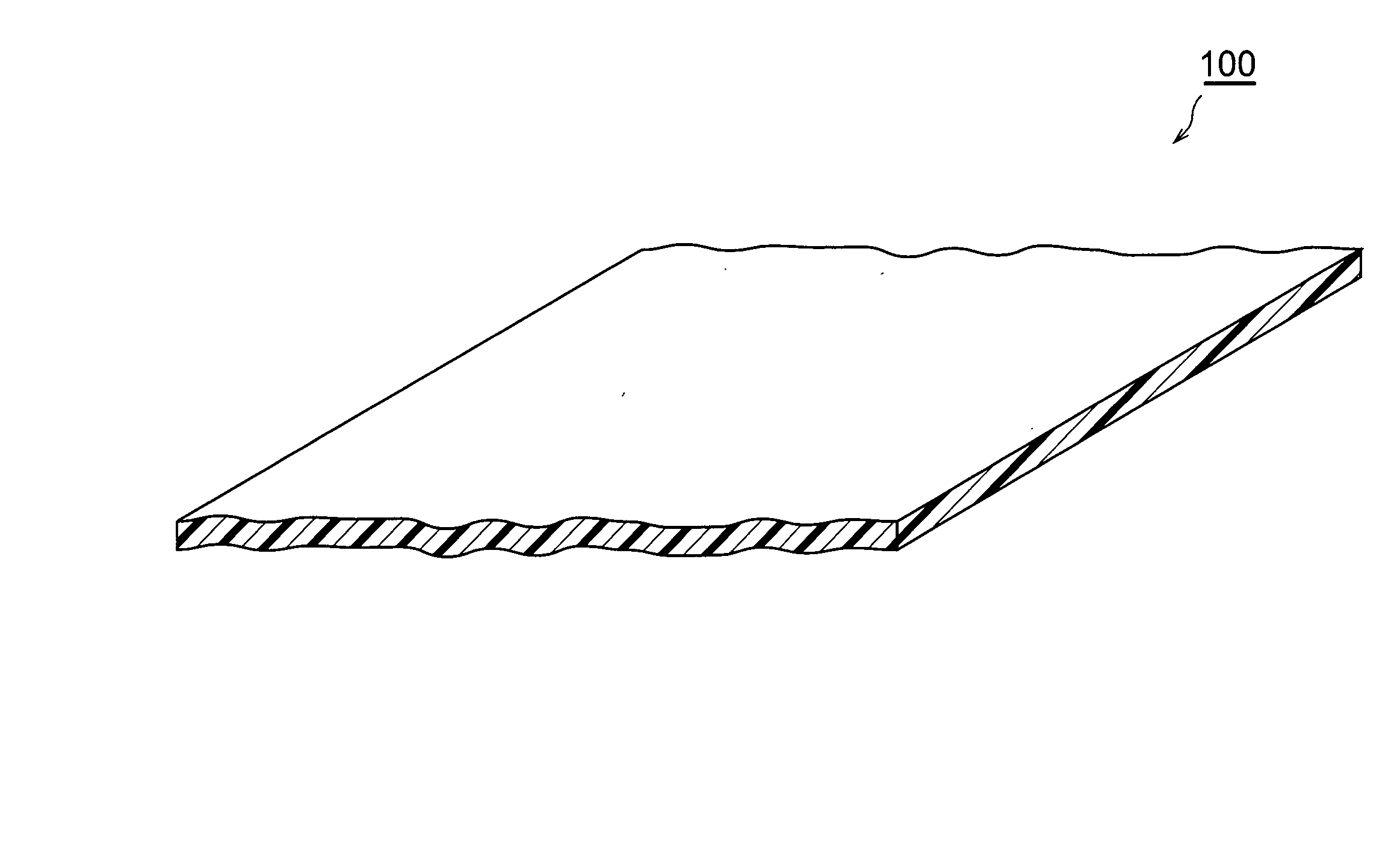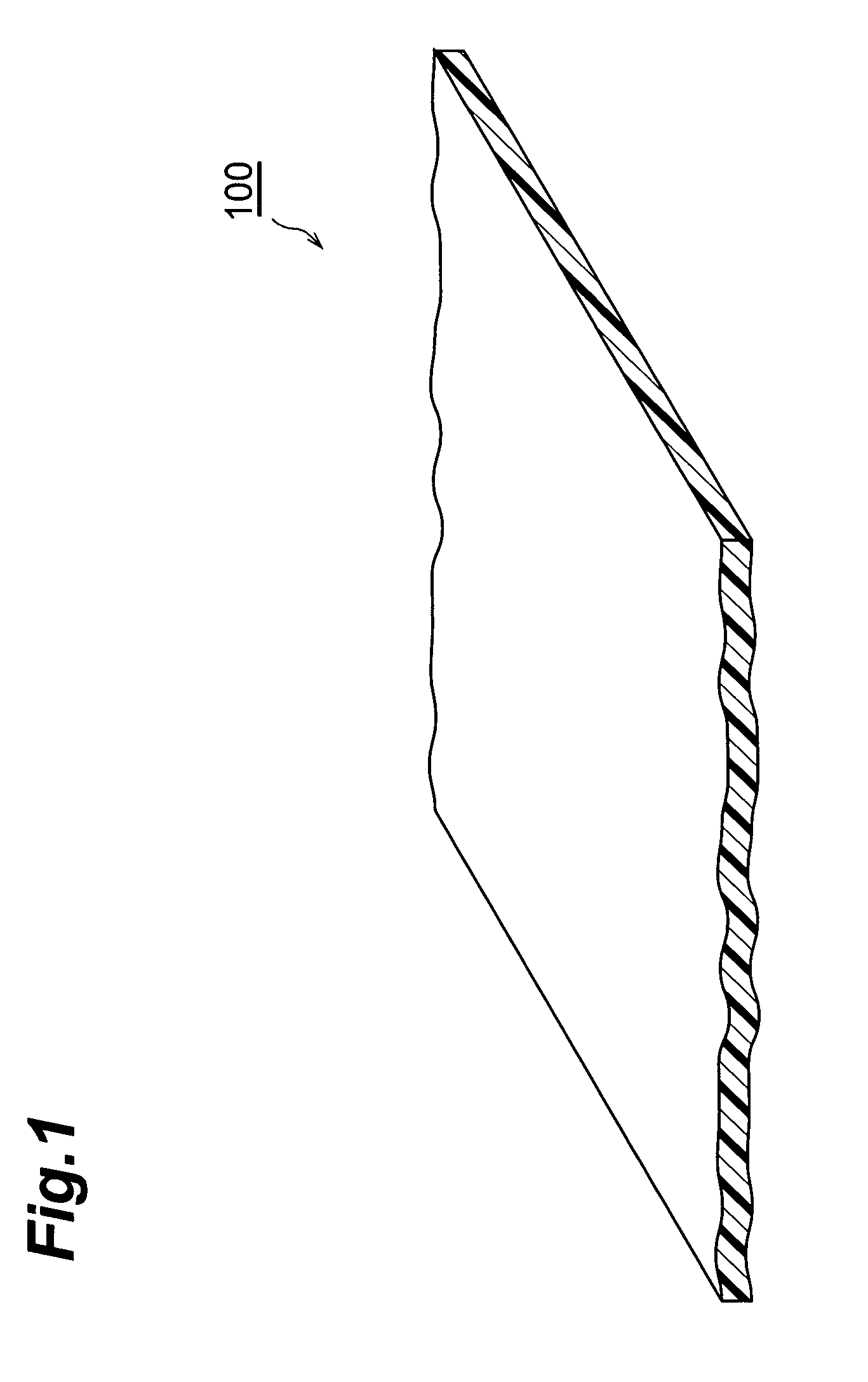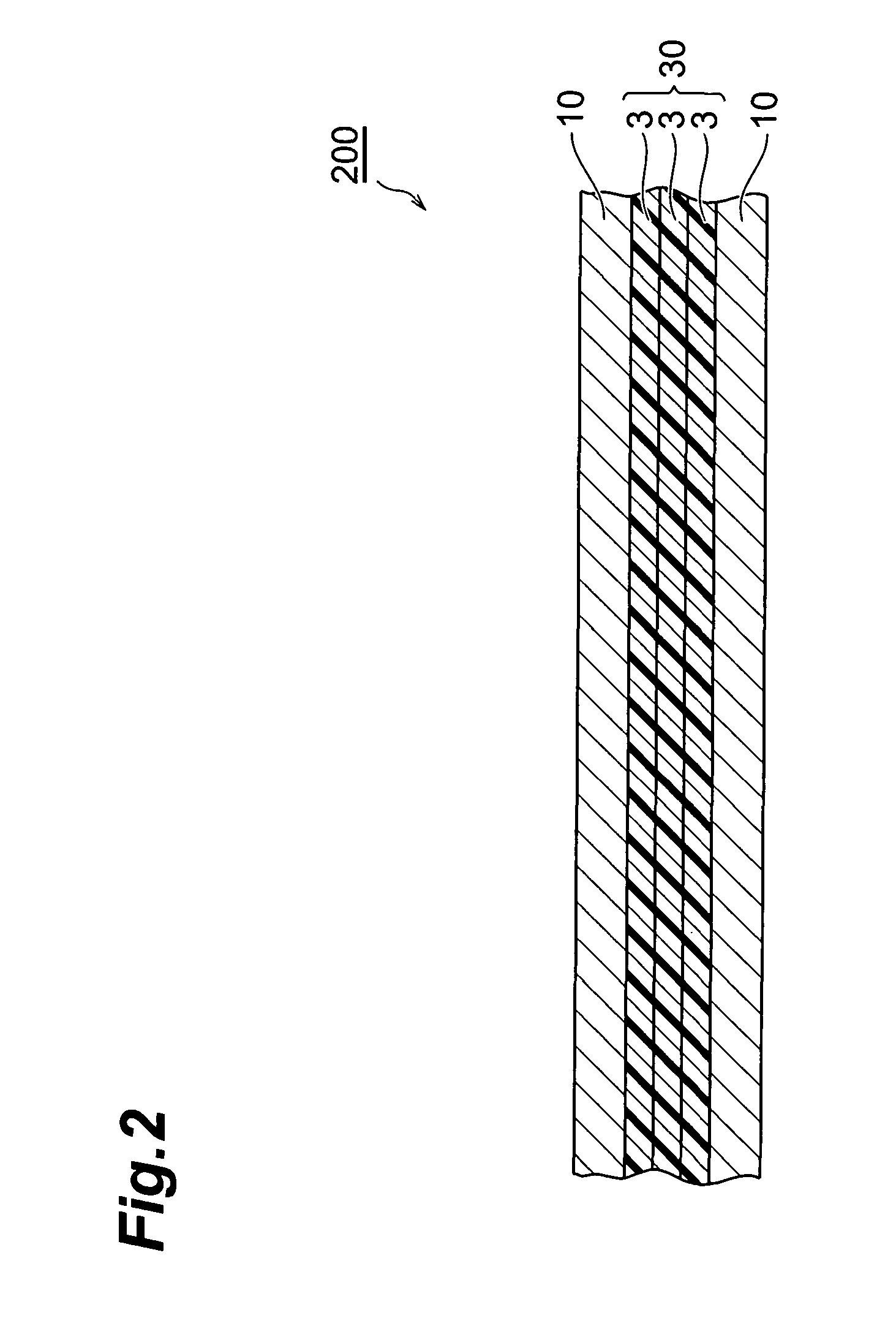Prepreg, metal-clad laminate and printed circuit board using same
a technology of metal foil and printed circuit board, which is applied in the direction of synthetic resin layered products, textiles and paper, animal housing, etc., can solve the problems of peeling between the fiber material and the resin in conventional ways, and achieve excellent dimensional stability and heat resistance, and the ability to be bent. , the effect of high density
- Summary
- Abstract
- Description
- Claims
- Application Information
AI Technical Summary
Benefits of technology
Problems solved by technology
Method used
Image
Examples
synthesis example 1a
[0101]In a 1-liter separable flask there were placed 31.0 g (0.10 mol) of 3,3′,4,4′-diphenylethertetracarboxylic dianhydride, 200 g of NMP (N-methyl-2-pyrrolidone) and 200 g of m-xylene, and the mixture was stirred at room temperature (25° C.). Next, 34.4 g (0.04 mol) of the reactive silicone oil KF-8010 (trade name of Shin-Etsu Chemical Co., Ltd., amine equivalents: 430) as a siloxanediamine was added dropwise using a dropping funnel. The reaction mixture was stirred while cooling on ice, and then 24.6 g (0.06 mol) of BAPP (2,2-bis[4-(4-aminophenoxy)phenyl]propane) was added as an aromatic diamine and stirring was continued for 2 hours at room temperature to obtain polyamic acid. The polyamic acid solution was heated to 190° C. and then heated and stirred for 20 hours, and the water produced with imide ring closure was removed by azeotropic distillation with m-xylene. Upon completion of the reaction, an NMP solution containing a polyimide resin was obtained.
synthesis example 2a
[0102]In a 1-liter separable flask there were placed 29.4 (0.10 mol) of 3,3′,4,4′-benzophenonetetracarboxylic dianhydride, 200 g of NMP (N-methyl-2-pyrrolidone) and 200 g of m-xylene, and the mixture was stirred at room temperature. Next, 34.4 g (0.04 mol) of the reactive silicone oil KF-8010 (trade name of Shin-Etsu Chemical Co., Ltd., amine equivalents: 430) as a siloxanediamine was added dropwise using a dropping funnel. The reaction mixture was stirred while cooling on ice, and then 24.6 g (0.06 mol) of BAPP (2,2-bis[4-(4-aminophenoxy)phenyl]propane) was added as an aromatic diamine and stirring was continued for 2 hours at room temperature (25° C.) to obtain polyamic acid. The polyamic acid solution was heated to 190° C. and then heated and stirred for 20 hours, and the water produced with imide ring closure was removed by azeotropic distillation with m-xylene. Upon completion of the reaction, an NMP solution containing a polyimide resin was obtained.
example 1a
[0103]After mixing 265.0 g of an NMP solution of the polyimide resin obtained in Synthesis Example 1A (30.2 wt % solid resin content), 40.0 g of NC3000 (trade name of Nippon Kayaku Co., Ltd.) as an epoxy resin (dimethylacetamide solution with 50 wt % resin solid content) and 0.2 g of 2-ethyl-4-methylimidazole, the mixture was stirred for about 1 hour until uniformity of the resin. It was then allowed to stand for 24 hours at room temperature (25° C.) for defoaming to produce a resin composition varnish.
PUM
| Property | Measurement | Unit |
|---|---|---|
| temperatures | aaaaa | aaaaa |
| combustion distance | aaaaa | aaaaa |
| combustion distance | aaaaa | aaaaa |
Abstract
Description
Claims
Application Information
 Login to View More
Login to View More - Generate Ideas
- Intellectual Property
- Life Sciences
- Materials
- Tech Scout
- Unparalleled Data Quality
- Higher Quality Content
- 60% Fewer Hallucinations
Browse by: Latest US Patents, China's latest patents, Technical Efficacy Thesaurus, Application Domain, Technology Topic, Popular Technical Reports.
© 2025 PatSnap. All rights reserved.Legal|Privacy policy|Modern Slavery Act Transparency Statement|Sitemap|About US| Contact US: help@patsnap.com



